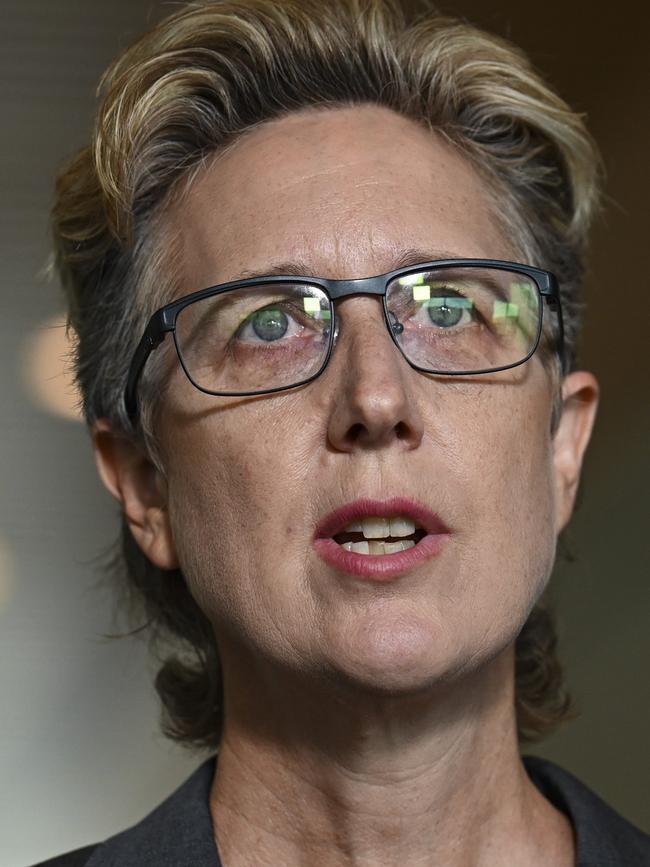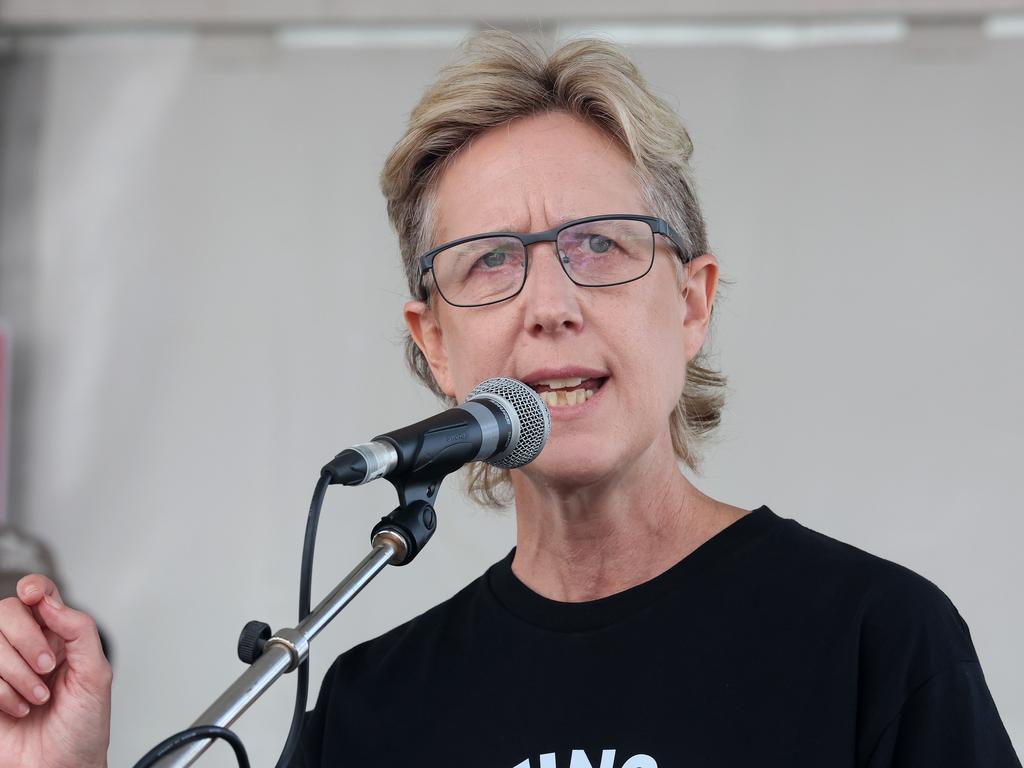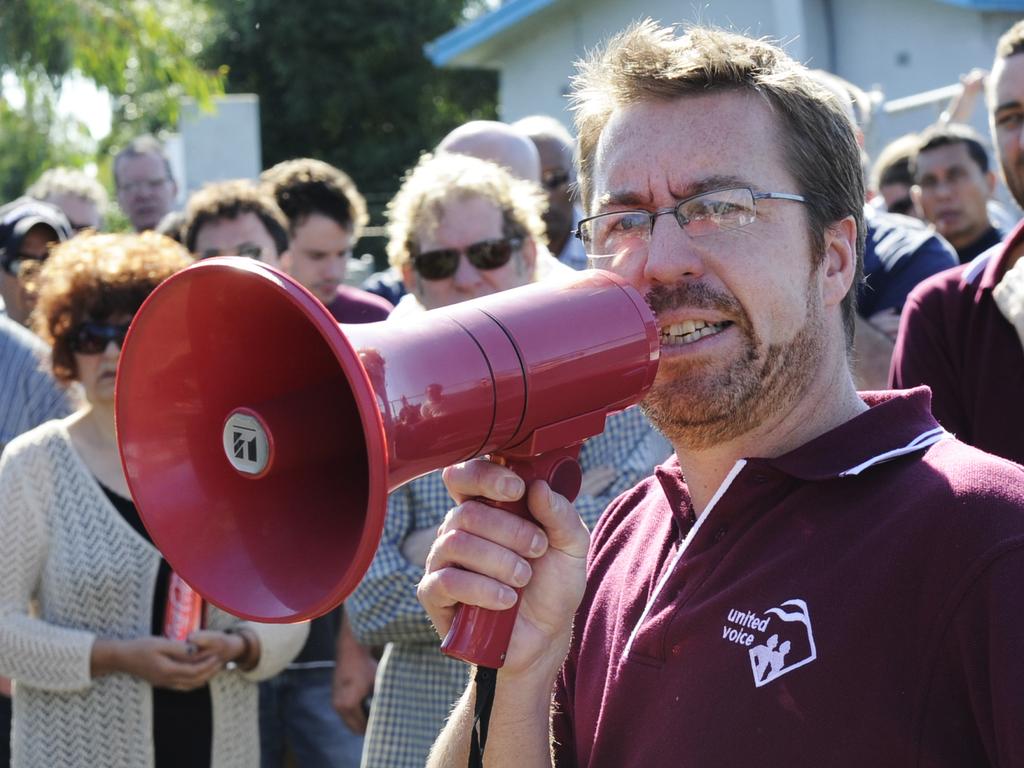Union bid to recruit 15000 gig workers
The union movement has moved to use the federal government’s new workplace laws to dramatically increase its membership.

The Transport Workers Union will launch a campaign to recruit up to 15,000 new members across the gig economy, as the union movement seeks to use the federal government’s new workplace laws and more favourable political environment to dramatically increase its membership.
With private sector union membership at a record low eight per cent of the workforce, union leaders nominated new multi-employer bargaining laws and the enshrining of union delegate rights as further vehicles to increase union membership.
Coinciding with the introduction of new minimum standards for gig workers, TWU national secretary Michael Kaine said the union would offer union membership to ride share and food delivery gig workers at an initial discounted rate, hoping to attract between 8000 and 15000 members by the end of 2025.
Mr Kaine said the TWU was “absolutely” using the workplace laws to grow its membership.
“For us, that’s entirely appropriate,” he said. “We are using the laws to sign them up and then we are using the fact that they’ve signed up to get a system in place that’s going to make their lives better – so it’s always that two-way process of unionism.”
Trade union membership has declined over recent decades, falling from 41 per cent of the workforce in 1992 to 12.5 per cent in 2022, equivalent to 1.4 million members.
Male membership has recorded the biggest fall, dropping from 45 per cent to 11 per cent, and female members now outnumber men by 774,000 to 651,000. While just 8.2 per cent of private sector workers are union members, public sector membership was substantially higher at 33 per cent in 2022, the last time data was released by the Australian Bureau of Statistics. Just 2 per cent of employees aged 15 to 19 years and 5 per cent aged 20 to 24 years were trade union members.
Reflecting the strong growth in union membership across feminised industries, union leaders said the average union member was no longer the stereotypical blue-collar male worker but a 47-year old female nurse.
“I think there was a time in the past where people thought a union leader or a unionist was a man in a construction vest,” Australian Education Union federal president Correna Haythorpe said,
“But that’s not the modern face of the union movement now. If you look at two of the largest unions – nurses and teachers – it’s most definitely not the face of our unions. I think we have a feminised face now.”
Union leaders said there was broad recognition that unions had to be more than what one leader called “money militants”, and be committed to devising strategies that lifted standards across industries, not just individual workplaces.
Blue-collar unions point to the success of the nation’s largest union, the 326,000-member Australian Nursing and Midwifery Federation, and the 190,000-member AEU in being able to use industrial means to develop the professional goals of members.
“I have seen a shift in unions taking more of an industry focus,” ACTU secretary Sally McManus said. “It’s not really just about bargaining. There are a whole lot of unions lifting up beyond workplaces to tackle industry wide issues.”

The ability of unions to enact this strategy has been assisted by the Albanese government’s workplace policy priorities and the passage of new laws that improve the bargaining position of unions and workers.
Mr Kaine said TWU membership had fallen from 64,000 before the pandemic to 57,000, with job cuts by airlines a big factor. He expected to get membership back over 60,000 this year.
He said “almost without exception, laws that support people who do work have been put in place by Labor governments at the urging of unions, and unions are collectives of workers and this is what the conservatives miss”.
“If you look at the road transport example, workers predominantly in the Transport Workers Union have come together, they have built alliances across the industry, through the employer community, through the client community, now through the gig community about the need for sustainable markets,” he said.
“They’ve suggested and put forward the laws that would be helpful in getting markets more sustainable road transport. Those laws have been put in place and now, yes, there’s a desire to use those laws to build union membership so that we can build an upward spiral of terms and conditions over time. That’s what unions do. That’s what the Labor Party was formed to do. It’s entirely unsurprising and it’s nearly always for the benefit of working people.”
United Workers Union national secretary Tim Kennedy said the union’s membership had fallen from 151,000 last year to 148,000, with a key challenge being a 33 per cent churn rate as workers left jobs in pursuit of higher-paying positions.
Mr Kennedy said the majority of the union’s membership was now female, and the campaign to use multi-employer bargaining to lift the pay of early childhood education workers was a vehicle to increase union membership.
“We believe that the opportunity to strike an agreement through multi-employer bargaining and change the situation for tens of thousands of early childhood educators is very important,” he said.
“At the moment, we cannot hold early childhood educators in the sector. They are leaving because the pay is so poor and the job quality and the respect at work is so low. We would expect it to translate into higher union membership because if it doesn’t then bargaining will collapse.”

Electrical Trades Union national secretary Michael Wright, whose union has recorded noticeable growth recently, said the fall in union membership over decades reflected a broader decline in support for institutions, “whether they are trade unions, churches or the Country Women’s Association”.
“I think probably when I was a kid everyone knew what a trade union was,” he said. “I was getting lunch the other day wearing my Electrical Trades Union shirt and the guy behind the counter looks at me and says, “is that a crypto thing?”.
“There’s a hell of a lot of people who have never met a union delegate, never met a union organiser. Maybe they’re well-educated people who read The Australian but maybe they’re also not consuming much news at all.”
Mr Wright said the energy transition would bring enormous job opportunities for electricians which should translate into membership growth. The biggest change resulting from the new laws was cultural, he said, with employers more willing to sit down and negotiate.
“I think just anecdotally, I would say we are seeing less labour hire than we used to,” he said. “And that’s not because we have brought thousands of same job, same pay applications, it’s just because industry is recalibrating.”
Australian Manufacturing Workers Union national secretary Steve Murphy said the union’s membership fell from 75,000 before the closure of the vehicle industry to below 50,000 last year. It now stands at just under 55,000.
“Arguably, it’s the blue collar and male dominated unions that have been in steady decline,” he said. “We’ve got to think about why that is and re-engage and get better at the conversations that we’re having because what we’re doing hasn’t been working.
“Now, arguably for some unions, particularly the AMWU, we’ve had massive industry closures, big cohorts of redundancy, offshoring of work. We’re in a rebuilding phase and we have just got to that with more haste, and I think we can learn from the unions that are growing, particularly the public sector unions, about what’s been effective, and be able to use that in a way that’s effective amongst the culture of the industries and workers we represent.”

ANMF federal secretary Annie Butler said the nursing and midwifery workforce was feminised and very culturally diverse while sharing a “uniqueness in culture”.
“The union is so part of that professional culture and I always say it’s a club you want to belong to,” she said. “The things that are important are their registration, their professional licence, how they meet the standards, how they protect themselves against that, how they are represented on an individual level in that way,” she said.
“We engage in lots of educational activities. All of that is very appealing to nurses and midwives. The really important thing for them over the past two decades has been the pursuit of nurse-to-patient ratios and a similar system for midwives. You can track membership growth directly to that because that then relates to everything else.
“Of course, nurses want pay and they want pay rises. One of the huge strengths of the ANMF over time has been that we have found the way to use industrial means to deliver the professional goals of our members, so the two are intertwined.
“For us, our focus has always been not just on union advancement, our focus has been on the profession’s advancement so really building and sustaining that, coming off the back of Covid.”
Ms Haythorpe also highlights the importance of the teachers’ union, whose membership has grown by 8000 members in recent years, providing professional support to members, singling out the backing given to teachers in their first three to five years in the job.
“There is that connection that this is more than just the fight for salaries and better working conditions, but this is about the support that the teaching profession needs for their teaching,” she said.
“(You make that early connection) and then quite often they are the people that turn into the union delegates and the union activists.”
She said 80 per cent of the AEU membership were female with women holding the majority of leadership positions in many of its branches.








To join the conversation, please log in. Don't have an account? Register
Join the conversation, you are commenting as Logout